Sigma Xi 2017 Student Research Showcase
Human Behavioral & Social Sciences
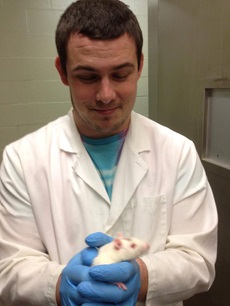 Effects of Nicotinamide on Neuroinflammation in Juvenile Animals
Effects of Nicotinamide on Neuroinflammation in Juvenile Animals
Aidan Smith, Southern Illinois University-Carbondale
We looked to see how nicotinamide (vitamin B3) affected neurobehavior and the neuroinflammatory response in juvenile animals after a traumatic brain injury. Nam treated animals did significantly better than other treatments behaviorally and physiologically.
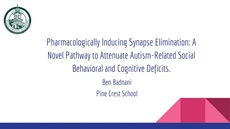 Pharmacologically Inducing Synapse Elimination: A Novel Pathway to Attenuate Autism-Related Social Behavioral and Cognitive Deficits
Pharmacologically Inducing Synapse Elimination: A Novel Pathway to Attenuate Autism-Related Social Behavioral and Cognitive Deficits
Ben Badnani, Pine Crest High School
This project focuses on the recent research progress of pharmacologically inducing synaptic pruning and its ability to reverse behavioral and cognitive deficits associated with Autism Spectrum Disorder.
 Fanning the Flames of Genius: The Relationship Between Grit and Creativity
Fanning the Flames of Genius: The Relationship Between Grit and Creativity
Bryce Meerhaeghe, University of Michigan-Dearborn
An ongoing investigation into the relationship between grit, creativity, and their connection to stress and personality. Going forward, we will look into possible applications for the information uncovered from this study in industries such as education.
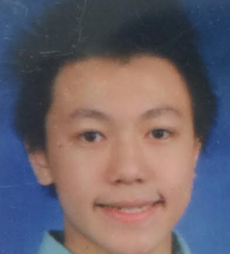 New Methodology for Identification of Novel Uses of Drugs Based on Language Pattern Analysis in Lycaeum, an Online Forum for Hallucinogens
New Methodology for Identification of Novel Uses of Drugs Based on Language Pattern Analysis in Lycaeum, an Online Forum for Hallucinogens
David Yi, Bronx High School of Science
This project demonstrates a use of the Internet as a source of data and a new methodology to address the issue of gathering data on not just on illicit substances but on a variety of topics.
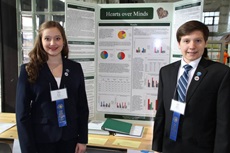 Hearts Over Minds
Hearts Over Minds
Edwin and Evelyn Bodoni, Cherry Creek High School
This study evaluated the impact of three fundraising strategies on high school students' philanthropic behavior. By analyzing the results, we gained valuable insight into the art of raising money, enabling us to run more effective future fundraising campaigns.
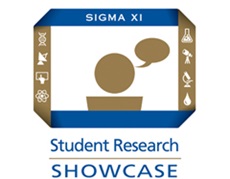 Investigating Vision Restoration After Traumatic Injury and Effective Treatments for Neurodegeneration
Investigating Vision Restoration After Traumatic Injury and Effective Treatments for Neurodegeneration
Hemangi Rajpal, American Heritage High School
I investigated vision restoration after traumatic injury and effective treatments for neurodegneration by harnessing the neurodegenerative-resistant potential of the suprachiasmatic nucleus, a visual target of the brain.
 Presidential Campaign Advertisements and their Implications for Change in Presidential Elections
Presidential Campaign Advertisements and their Implications for Change in Presidential Elections
Jessica Sullivan, North Carolina School for Science and Math
I studied presidential campaign advertisements to identify changes in presidential elections from 1952-2012.
 The Role of Sentence Context in Children and Adults' Perception of Foreign-Accented Speech
The Role of Sentence Context in Children and Adults' Perception of Foreign-Accented Speech
Katherine Miller, Ohio State University
We measured the differences in how children and adults can use sentence context to better understand English spoken with unfamiliar foreign accents
 The Evaluation of Internet Delivered Coaching Approach behavior and Leading by Modeling (I-CALM)
The Evaluation of Internet Delivered Coaching Approach behavior and Leading by Modeling (I-CALM)
Kiani Oro, Florida International University
In an effort to treat anxious children in early childhood stages, the Coaching Approach behavior and Leading by Modeling (CALM) Program was developed as an adaptation of Parent-Child Interaction Therapy (PCIT). In this study, the evidence-based CALM protocol will be delivered over the Internet to evaluate the extent to which videoconferencing can be leveraged to extend the reach of quality care.
 Predicting Roll Call Votes in the U.S. House of Representatives
Predicting Roll Call Votes in the U.S. House of Representatives
Lucy Wu, North Carolina School for Science and Math
In this project, campaign contributions data was incorporated into an existing model of roll call votes in the U.S. House where roll call votes are regressed on bill topic, ideology, district characteristics, and legislator committee membership.
 Is Vowel Insertion for Turkish Onset Cluster Repair Intrusion or Epenthesis? An Acoustic Study
Is Vowel Insertion for Turkish Onset Cluster Repair Intrusion or Epenthesis? An Acoustic Study
Mallika Pajjuri,Dublin High School
The native Turkish lexicon prohibits consonant clusters in syllable onsets. But with the contemporary inclusion of loanwords, Turkish speakers are having to enunciate peculiar onset consonant clusters; a vowel is often perceived to be inserted between two consonants as a repair system for onset clusters (Bellik 2016). In order to discern whether this repair is inadvertent or purposeful, this project investigates the categorization of Turkish onset cluster repair.
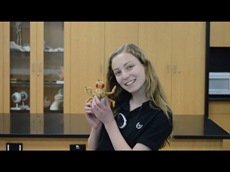 A Novel, Multi-Targeted Therapeutic Approach to Treating an Alzheimer's Dementia Model: Drosophila melanogaster Assay with Metal Protein Attenuating Compound and Curcumin
A Novel, Multi-Targeted Therapeutic Approach to Treating an Alzheimer's Dementia Model: Drosophila melanogaster Assay with Metal Protein Attenuating Compound and Curcumin
Mikhal Ben-Joseph,American Heritage High School
I investigated the use of multi-targeted therapy to treat transgenic Drosophila melanogaster with Alzheimer's Disease-like symptoms. The natural product curcumin was more effective in treating the flies than hydroxyquinoline or a combination of both.
 Rethinking Depression Treatment: A Study on the Intra-Subject Variability of Resting-State fMRI and the Development of a Novel Computational Tool to Improve Transcranial Magnetic Stimulation for Major Depressive Disorder Treatment
Rethinking Depression Treatment: A Study on the Intra-Subject Variability of Resting-State fMRI and the Development of a Novel Computational Tool to Improve Transcranial Magnetic Stimulation for Major Depressive Disorder Treatment
Pranav Upadhyayula, Illinois Math and Science Academy
I developed a novel computational tool that quantifies the reliability of rsfMRI for treating Major Depressive Disorder with Transcranial Magnetic Stimulation and improves the efficacy of TMS by providing doctors with subject-specific TMS stimulation sites.
 The Combinational Effects of Environmental Enrichment and Nicotinamide After Controlled Cortical Impacts in Juvenile Rats
The Combinational Effects of Environmental Enrichment and Nicotinamide After Controlled Cortical Impacts in Juvenile Rats
Ryan Holden, Southern Illinois University-Carbondale
Traumatic brain injury (TBI) is the leading cause of death and disability in children. There are few effective therapeutic interventions that mediate behavioral deficits following damage for juvenile populations. This study used a combinational therapy of environmental enrichment (EE) and a 500mg/kg dose of nicotinamide (NAM) administered following a bilateral controlled cortical impact (CCI) or sham surgery on post-natal day 28 rats.
.jpg?sfvrsn=4ea2b958_2&MaxWidth=230&MaxHeight=&ScaleUp=false&Quality=High&Method=ResizeFitToAreaArguments&Signature=1286654F8CB0C02AAF0040601A372B50) Rhythmic Modulation of the Post Auricular Muscle Response in Humans
Rhythmic Modulation of the Post Auricular Muscle Response in Humans
Zoe Swann, Oberlin College
The post auricular muscle response occurs at loud bursts of sound. This lab studies it under rhythmic and nonrhythmic drumming and listening conditions using EEG. We found that it is larger when actively drumming, but not necessarily under rhythmic conditions.